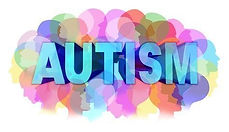

EM Counselling and Psychology

Diagnosis of Autism Spectrum Disorder
Autism spectrum disorder is a pervasive developmental disorder (as per DSM-5) and children are diagnosed as autistic when they display difficulties in the areas of social communication and restricted and repetitive patterns of behaviour. Some of the characteristics that clinicians and parents describe are:
Social communication
Speech difficulties ranging from not speaking to having a difficulty with back-and-forth conversations.
Reduced sharing of interests (e.g. no pointing or looking at where parents point to show objects) or thoughts and feelings.
Not responding when spoken to as they are engrossed in their internal world.
Not initiating interactions with other people, especially neurotypicals.
Not copying what neurotypical people do, such as waving good bye, clapping.
Avoiding eye contact, some autistic people it is even painful to look people in the eye.
Not understanding of neurotypical gestures/facial expressions of other people.
Differences in using gestures/facial expressions when communicating with others, typically less animated.
Differences in play - lining up toys, categorizing rather than engaging in imaginative play.
Insistence on playing by very fixed rules as changes in rules can add to the sensory and information overload.
Differences in making friends and maintaining friendships, typically getting along better with other neurodivergent individuals or preference of solitude.
Restricted and repetitive patterns of behaviour
Lining up toys, spinning objects and finding great enjoyment from it.
Repeating certain phrases or words over and over because the sound of it might be soothing and calming.
Struggles with change, transitions (e.g. needing to go to the shops the same way every time) as change adds to the overwhelm people feel about neurotypical world.
Insisting on routines, sameness (e.g. having the same five toys in the bath each day) that keep people safe and comforted.
Having narrow and intense interests (e.g. obsession with Thomas the Tank engine, dinosaurs, lawn mowers) allowing neurodivergent people to know lots about their area of interest.
Sensory sensitivities such as fussy eating, being too sensitive to sounds, feeling overwhelmed in the shopping centres, not liking labels on clothes, excessive smelling or touching objects/people, fascination with lights or spinning movements.
Mostly for funding purpose, diagnosis of autism also includes severity level both in social communication and in restricted and repetitive patterns of behaviour. The levels range from 1 to 3, indicating how much support autistic child will require.
It is estimated that in Australia approximately 1 in 100 children are diagnosed with autism and people are becoming more aware of some of the differences neurodivergent people encounter and how we can all celebrate the diversity without judgement. The world is becoming more welcoming to all types of differences in our brains and being neurodivergent plainly means being different, not less as a person. There are so many inventions and advances that would not be possible and available to us today if not carefully researched and immaculately tested and delivered by neurodivergent people.